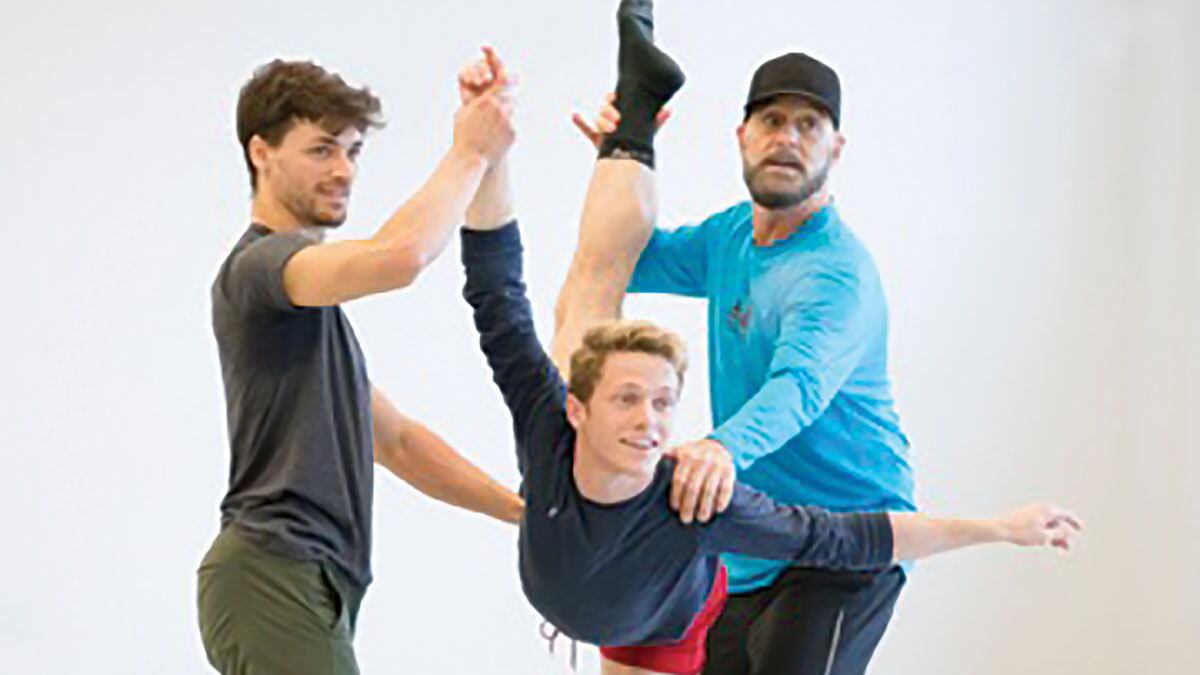During a performance of NW Dance Project's kinetic and sensual duet MemoryHouse, Franco Nieto and Andrea Parson faced an unexpected incident.
"Andrea's breast fell out of her costume," Nieto recalls, "but as a professional, she's not going to fix it onstage. There was a moment when, as her partner, I covered her and protected her."
Parson was unperturbed ("I don't think it fazed me as much as it did him," she says), but Nieto remembers "feeling so, 'How dare you audience members look at her the way you just did?' I still feel the fire of that one moment happening."
That fire is among the many forces that drive NW Dance Project's Summer Premieres, a trilogy of new contemporary dance pieces that includes a duet starring Nieto and Parson. The entire program unites three choreographers (artistic director Sarah Slipper, Felix Landerer and James Canfield) and is designed not only to cap NW Dance Project's 15th season with a flourish, but to revel in two of the company's most cherished commandments: Give choreographers creative freedom and refuse to be confined by the dogma of either modern or classical dance.
The tradition of NW Dance Project's summer shows originated at the company's old studio on North Shaver Street (it has since relocated to an airy, pristine space on Northeast 10th Avenue, near the Burnside Bridge). "The light poured through the studio, and it wasn't like entering a black box, a traditional proscenium theater," Slipper says. With Summer Premieres, she aims to re-create that pale gleam with a white set and costumes that are mostly in "neutral whites and ivories."
For Landerer, who began his dance career in his birth country of Germany, that restriction was a source of inspiration. "It was like, 'It's a white room and white costumes. What comes up in your mind?'" he recalls. "And then I was like, 'Snow. Arctic. Polar bear. Climate change.'" The resulting piece, titled All's Been Said, is choreographed in a fascinatingly abrupt, robotic style that feels like both a metaphor for humanity's inaction in the face of environmental devastation and a preview of a post-human, automaton-filled future.
Canfield, by contrast, looked to the past for ideas. His contribution is a loose adaptation of Tennessee Williams' A Streetcar Named Desire called Sketches of Connotation. While the piece was initially 50 minutes long, it will have been streamlined to approximately 35 minutes by the time it is unveiled. During the editing process, Canfield altered the title and the music (he picked several songs, including "House of the Rising Sun" and "Ode to Billy Joe").
NW Dance Project executive director Scott Lewis concedes that these kinds of creative gear shifts would be maddening for most artistic directors—but not for Slipper. "At this point, she doesn't know exactly how long each of the pieces are, or even what music is going to be in the final thing," Lewis says. "But because we give choreographers complete freedom, we roll with those punches and it doesn't even bother us anymore."
While Slipper's piece, Save Me the Plums, was initially inspired by "Tonight I Can Write (the Saddest Lines)," Pablo Neruda's poem of apocalyptic heartbreak, her choreography has an energy that diverges from Neruda's liquid moodiness ("My heart looks for her, and she is not with me"). As I watch Nieto and Parson rehearse, I see tenderness in the way they place their hands on each other's necks, but also volatility, especially in a spectacular moment when Parson leaps and knocks Nieto to the ground.
Lewis believes that kind of intensity is crucial to contemporary dance. "It's based in technique and is highly physical," he says. "These dancers have to be athletes as well as artists. Not to discount any other dancer's athletic ability, but contemporary in particular uses so much of the full body. The partnering is so real. They're getting on the floor and getting back up. There's no limit to the range of movement." You can feel the lack of limits Lewis describes in Summer Premieres. In addition to being a visceral rush, the program gives you an opportunity to see the exciting contrast between Canfield's fluid, graceful choreography and the deliberately mechanical motion of Landerer's piece.
The fusion of disparate sensibilities isn't just an aesthetic choice—it's part of something Nieto believes is one of NW Dance Project's greatest strengths.
"We all come from different backgrounds and all different styles, and that's what's kind of nice about this company in general," he says. "We're a bunch of misfits or hodgepodges, but under the umbrella of dance and technique, everyone has a different flavor to add. We all fit here. We found our home."
SEE IT: Summer Premieres is at Lincoln Performance Hall, 1620 SW Park Ave., nwdanceproject.org. 7:30 pm Thursday-Saturday, June 13-15. $34-$58.
